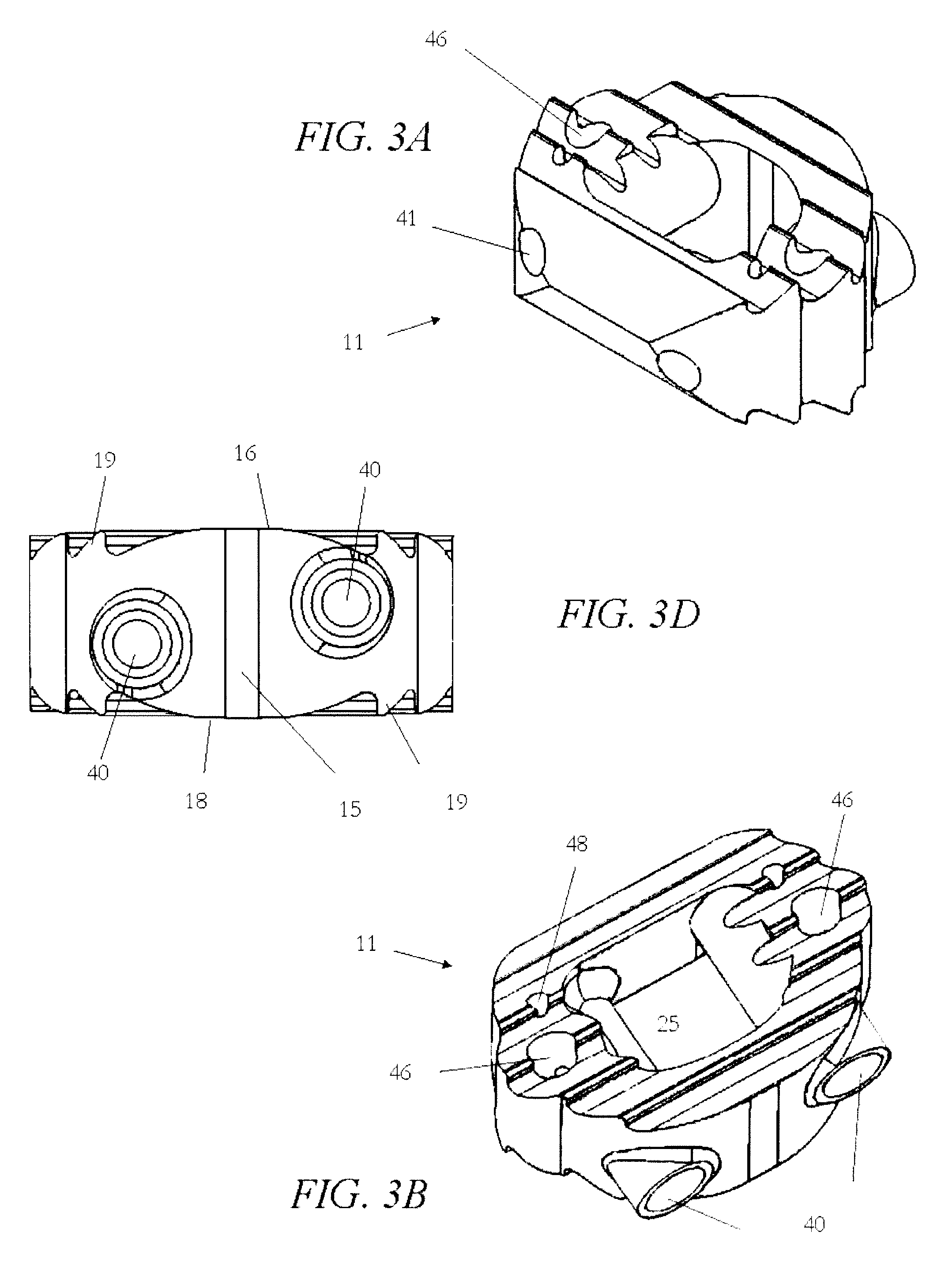Open body box form interbody fusion cage
a technology of interbody fusion and open body, which is applied in the field of intervertebral devices, can solve the problems of nerve root compression and pain, lack of cohesive strength, and pain of spinal nerve roots
- Summary
- Abstract
- Description
- Claims
- Application Information
AI Technical Summary
Benefits of technology
Problems solved by technology
Method used
Image
Examples
Embodiment Construction
[0030]With reference to FIGS. 1 through 3e and particular reference to FIG. 3c, a preferred embodiment of the fusion cage 10 of the present invention comprises a cage body 11 having a generally irregular annulus shape. The cage body is preferably (but not necessarily) symmetric in overall shape about a central axis 51 (See FIG. 3C) forming left and right halves 12, 14 that are joined at the front 17 and back 15 to form an annular body surrounding a central void 25 extending from upper surface 16 to lower surface 18 (See FIG. 3E). It should be observed that the relative terms “front,”“back,”“left,”“right,”“top,” or “bottom” are utilized herein to describe the depictions of the invention as provided in the figures and are not necessarily intended to refer to the orientation of the device when implanted nor to limit the disclosure. Further, the term “half” should not be strictly construed to mean “one of two equal parts of a whole” but rather only as one of two approximately equivalent...
PUM
 Login to View More
Login to View More Abstract
Description
Claims
Application Information
 Login to View More
Login to View More - R&D
- Intellectual Property
- Life Sciences
- Materials
- Tech Scout
- Unparalleled Data Quality
- Higher Quality Content
- 60% Fewer Hallucinations
Browse by: Latest US Patents, China's latest patents, Technical Efficacy Thesaurus, Application Domain, Technology Topic, Popular Technical Reports.
© 2025 PatSnap. All rights reserved.Legal|Privacy policy|Modern Slavery Act Transparency Statement|Sitemap|About US| Contact US: help@patsnap.com



